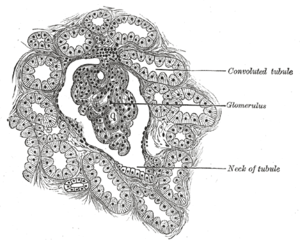The Right and Left Hearts are Connected in Series, but are Folded Together to Form a Single Unit
- The right heart pumps blood only to the lungs; its output is low pressure (25 mm Hg)
- The left heart pumps blood to the rest of the body; its output is high pressure (120 mm Hg)
- Because the 2 hearts are attached they beat in synchrony
- The 2 atria receive the incoming blood- they pump extra blood into the ventricles
Oxygen Uptake in the Lungs is Increased About 70X by Hemoglobin in the Red Cells
- In the lungs oxygen must enter the blood
- A small amount of oxygen dissolves directly in the serum, but 98.5% of the oxygen is carried by hemoglobin
- All of the hemoglobin is found within the red blood cells (RBCs or erythrocytes)
- The hemoglobin content of the blood is about 15 gm/deciliter (deciliter = 100 mL)
- Red cell count is about 5 million per microliter
Each Hemoglobin Can Bind Four O2 Molecules (100% Saturation)
This is a preview of OXYGEN CARRIED IN BLOOD WHEN PERSON IS AT HIGH ALTITUDE-TUTORIAL PHYSIOLOGY.
Read the full post (1205 words, 4 images, estimated 4:49 mins reading time)

Image via Wikipedia
Basic Kidney Anatomy
- Kidneys paired, about 150 gm each
- Urine forming units:
- Cortex
- Medulla (lobed: renal pyramids)
- Cortex and medulla composed chiefly of nephrons and blood vessels
- Supplied by renal arteries (branches of descending aorta) and renal veins (branches of inferior vena cava)
- Urine collecting and expelling units:
- Calyces
- Renal pelvises
- Ureters
- Bladder
- Urethra
Although the Kidneys are Tiny Organs They Receive 25% of the Cardiac Output
Sex is Very Costly
- Large amounts of energy required to find a mate and do the mating: specialized structures and behavior required
- Intimate contact provides route for infection by parasites (AIDS, syphillis, etc.)
- Genetic costs: in sex you pass on only half your genes to your children
- Males are an expensive luxury- in most species they contribute little to rearing offspring
But There are Some Advantages
- More genetic diversity: more potential for survival of species when environmental conditions change
- Shuffling of genes in meiosis
- Crossing-over in meiosis
This is a preview of WHY SEX? -SEXUAL REPRODUCTION-TECHNICAL POINT OF VIEW FOR DISCUSSION.
Read the full post (949 words, 3 images, estimated 3:48 mins reading time)
Electrical Activity and EKG
The Cardiac Action Potential Has a Prolonged Refractory Period
- Heart action potential has a prolonged spike (depolarized)
- Membrane is refractory for a long time
- This prevents summation and gives the heart time to fill
All Parts of the Heart Beat Spontaneously
- Heart muscle does not require stimulation by a nerve
- Nerves usually inhibit the heart beat; cutting the nerves -> heart speeds up
- Beat originates as a depolarization in the heart muscle cell itself (self stimulation)
- All parts of the heart can beat spontaneously
Chemical Transmitters Carry the Signal Across Synapses & Neuromuscular Junctions
- A contact between 2 nerves is called a synapse
- At the synapse there is a break in electrical transmission (the action potential cannot cross)- instead chemicals are released that carry the signal to the next nerve

- The release of chemical transmitters at nerve endings was first shown by Otto Loewi in the frog heart
- A neuromuscular junction (NMJ) is a contact between a nerve and a muscle- it is like a synapse, the action potential stops and the signal is carried by a chemical
This is a preview of SYNAPSES AND NEUROMUSCULAR JUNCTIONS OF NEURONS-TUTORIAL.
Read the full post (1266 words, 3 images, estimated 5:04 mins reading time)



